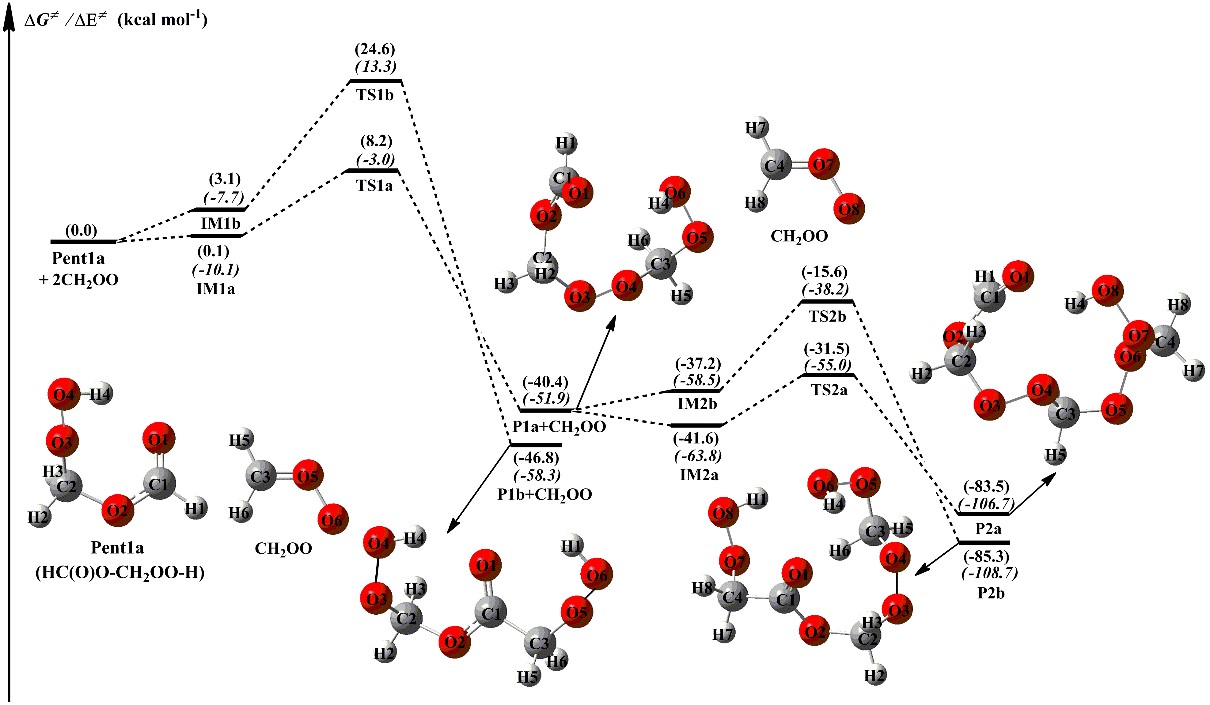Hydroperoxide esters, formed in the reactions of carbonyl oxides (also called Criegee intermediates, CIs) with formic acid, play a crucial role in the formation of secondary organic aerosol (SOA) in the atmosphere.
Recently, a research group from the Institute of Earth Environment of the Chinese Academy of Sciences (IEECAS) investigated the oligomerization reaction mechanisms and kinetics of distinct CIs (CH2OO, syn-CH3CHOO, anti-CH3CHOO and (CH3)2COO) reactions with their respective hydroperoxide esters by using quantum chemical and kinetics modeling methods.
They found that the barrierless 1,4 O-H insertion reaction leading to the formation of hydroperoxide esters is the most favorable pathway in the initiation reactions of distinct SCIs with HCOOH. The exothermicity of distinct CIs reactions with HCOOH decreases when the number of methyl groups increases, and the exothermicity of the anti-CH3CHOO + HCOOH reaction is higher than that of the syn-CH3CHOO + HCOOH system.
The addition reactions of CIs with hydroperoxide esters proceed through successive insertion of CIs into hydroperoxide ester to form oligomers that involve SCIs as the repeating unit. These oligomerization reactions are strongly exthermoic and spontaneous.
The saturated vapour pressure and saturated concentration of the adduct products formed from the successive reactions of SCIs with HCOOH decrease significantly as the number of SCIs is increased. The adduct products in the nCH2OO + HCOOH reactions belong to IVOC when the number of SCIs is greater than or equal to 3. The adduct products in the nanti-CH3CHOO + HCOOH, nsyn-CH3CHOO + HCOOH, and n(CH3)2COO + HCOOH reactions belong to IVOC when the number of SCIs ranges from 2 to 4, whereas they belong to SVOC when the number of SCIs is equal to 5.
This study, published in Atmospheric Chemistry and Physics, was supported by the National Natural Science Foundation of China, Strategic Priority Research Program of the Chinese Academy of Sciences, China, and CAS "Light of West China" Program.

Figure 1. The potential energy surface for the reactions of distinct SCIs with hydroperoxide esters at the M06-2X/ma-TZVP//M06-2X/6-311+G(2df,2p) level of theory (Image by CHEN Long et al)
Contact: Li Yang , Institute of Earth Environment, Chinese Academy of Sciences, Xi'an, China. Email: liyang2018@ieecas.cn
 © 2015 Institute of Earth Environment,CAS
© 2015 Institute of Earth Environment,CAS Address:No. 97 Yanxiang Road, Xi'an 710061, Shaanxi, China

 Location :
Location :